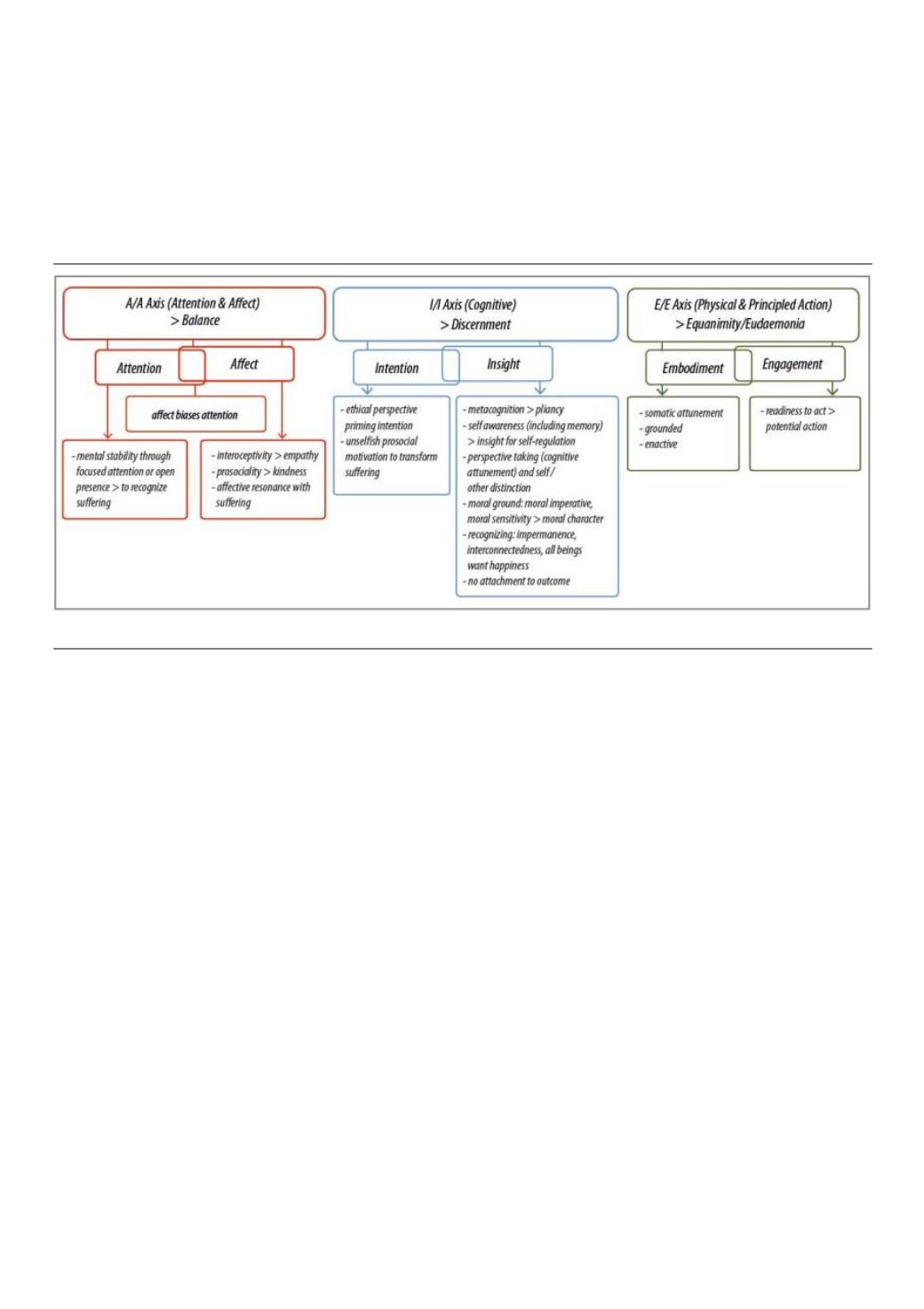
embodied and engaged process that can lead to a direct and transformative relationship with
suffering and be enacted in the world. Since compassion seems to be an emergent process rather
than a mental feature, the implication that this has regarding the trainability of compassion for
clinicians is quite different from assumptions often made by those who wish to train others in
compassion. One can set the field for the emergence of compassion by training in the faculties
associated with the A/A Axis, I/I Axis and E/E Axis. In the last section of this paper, I propose an
intervention that can support the priming of compassion for clinicians by bringing together the
features described in the compassion model.
Figure 2:
Summary Figure
This is a summary figure of the A.B.I.D.E. heuristic model of modes that prime and optimize
principled compassion (attention is biased, contingent upon affect and context)
The mnemonic of the A.B.I.D.E. compassion model can assist clinicians in recalling the elements
of the model, though it is important to recall that the model itself is non-linear, and compassion is
an emergent process arising from the combination of all these faculties:
A.B.I.D.E. = Compassion:
A = Attention and Affect >
B = Balance
I = Intention and Insight >
D = Discernment
E = Embodiment and Ethical Enactment
Engagement > Equanimity/Eudaemonia
221


